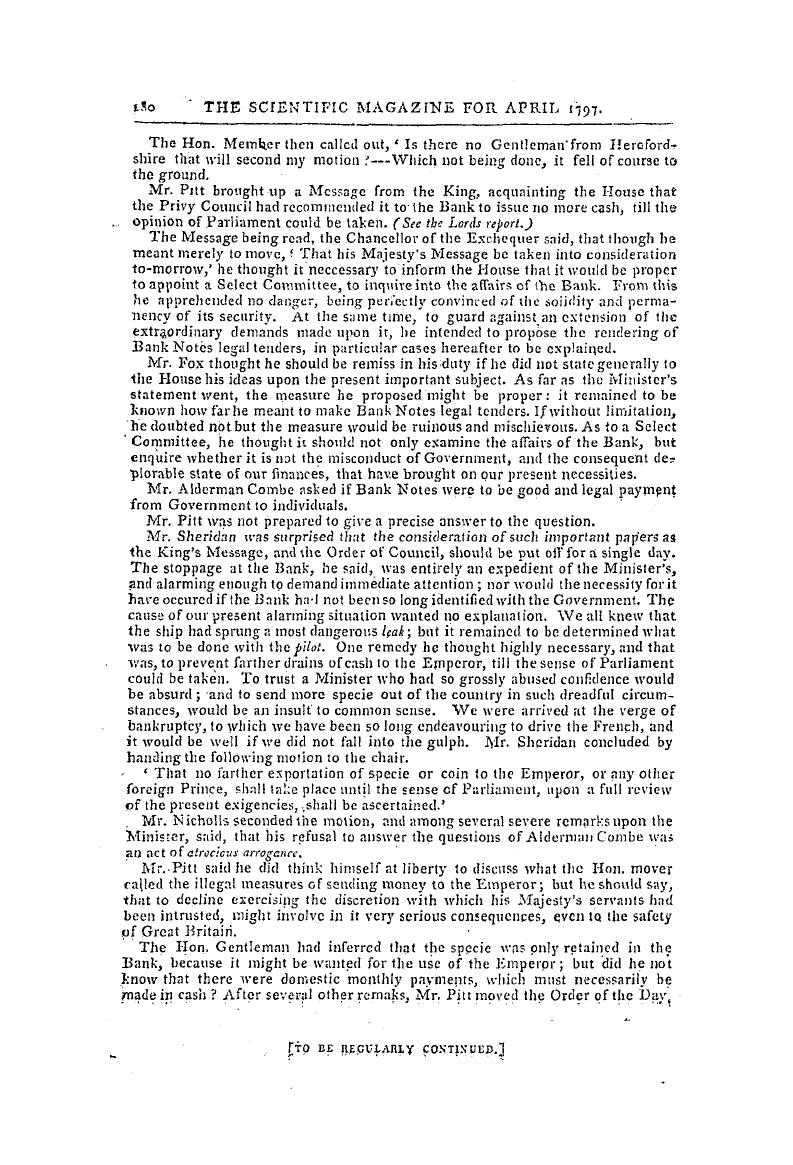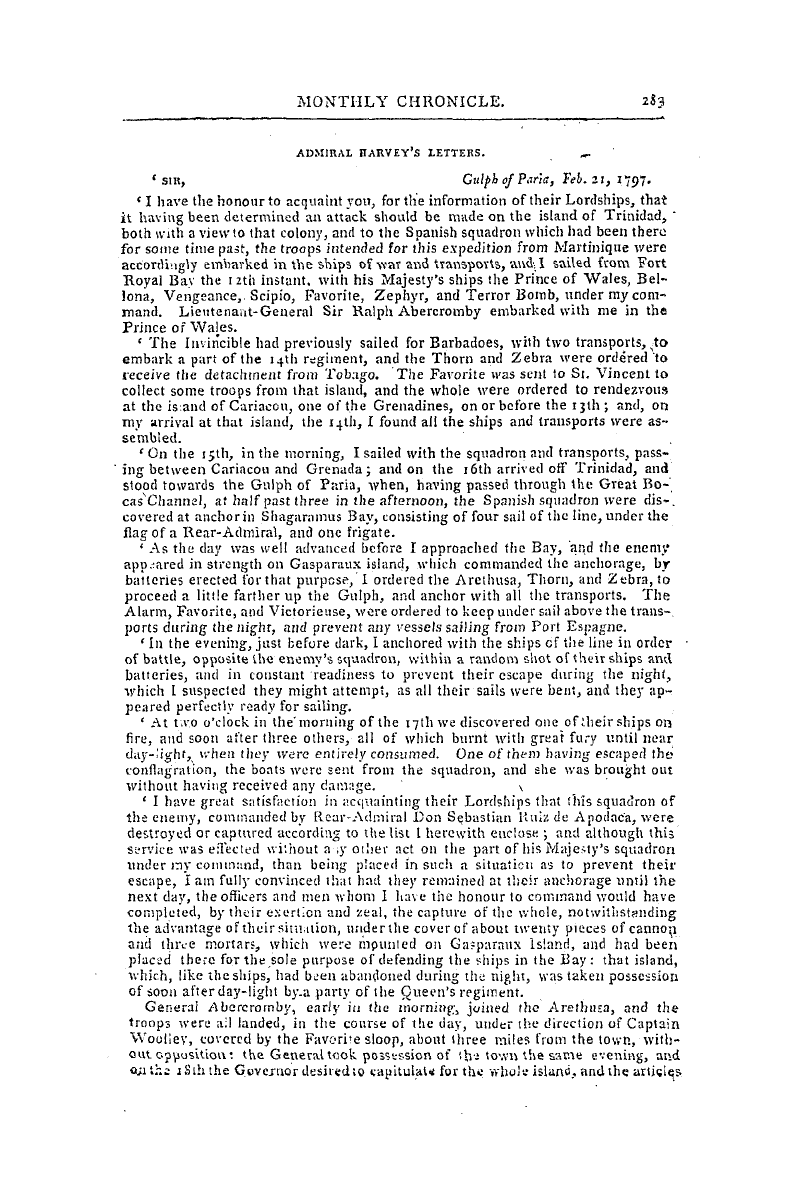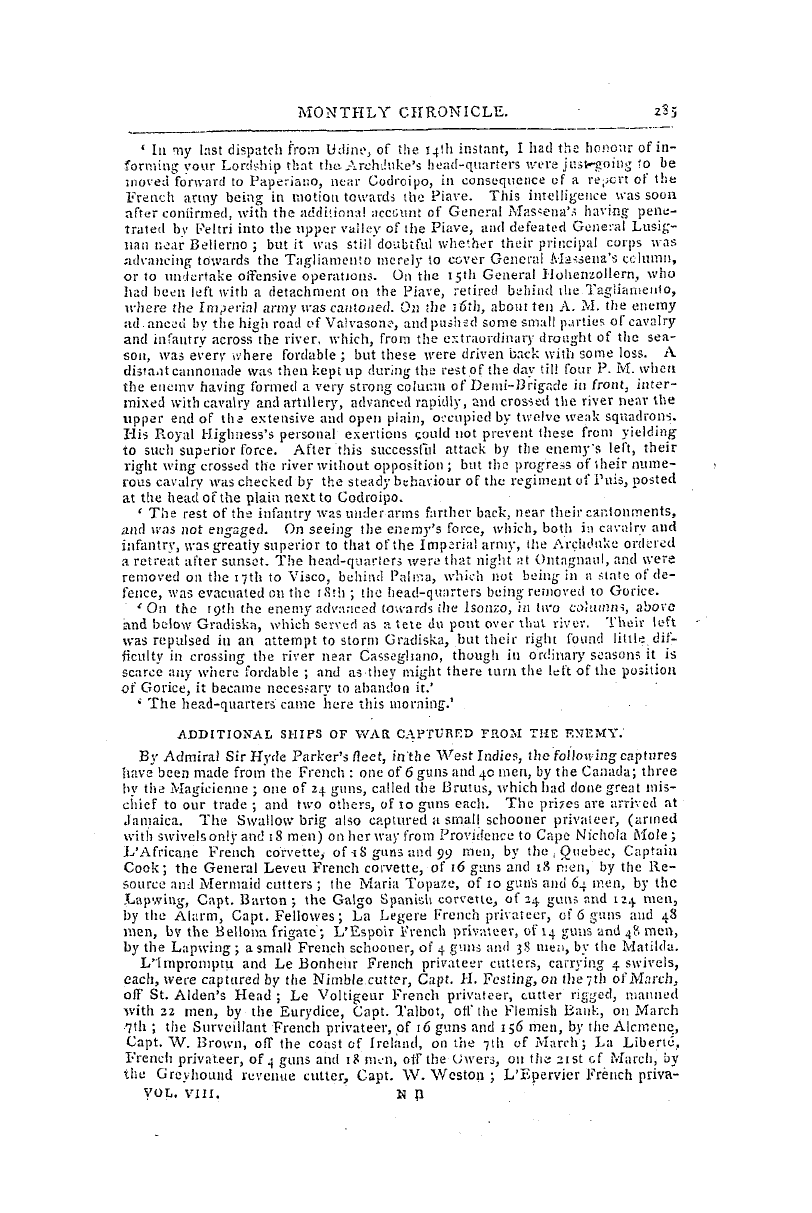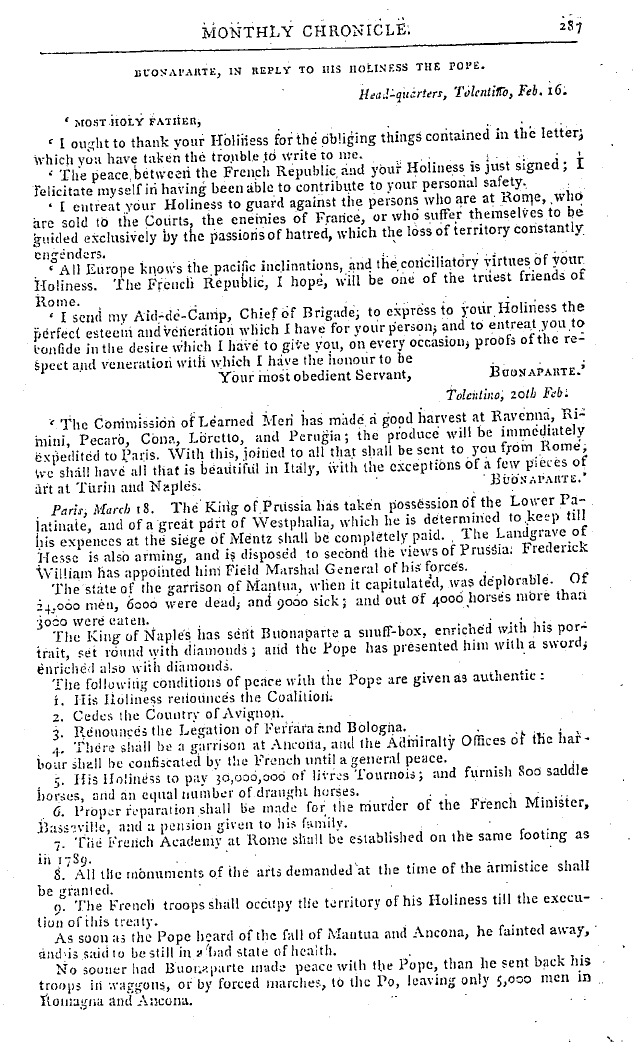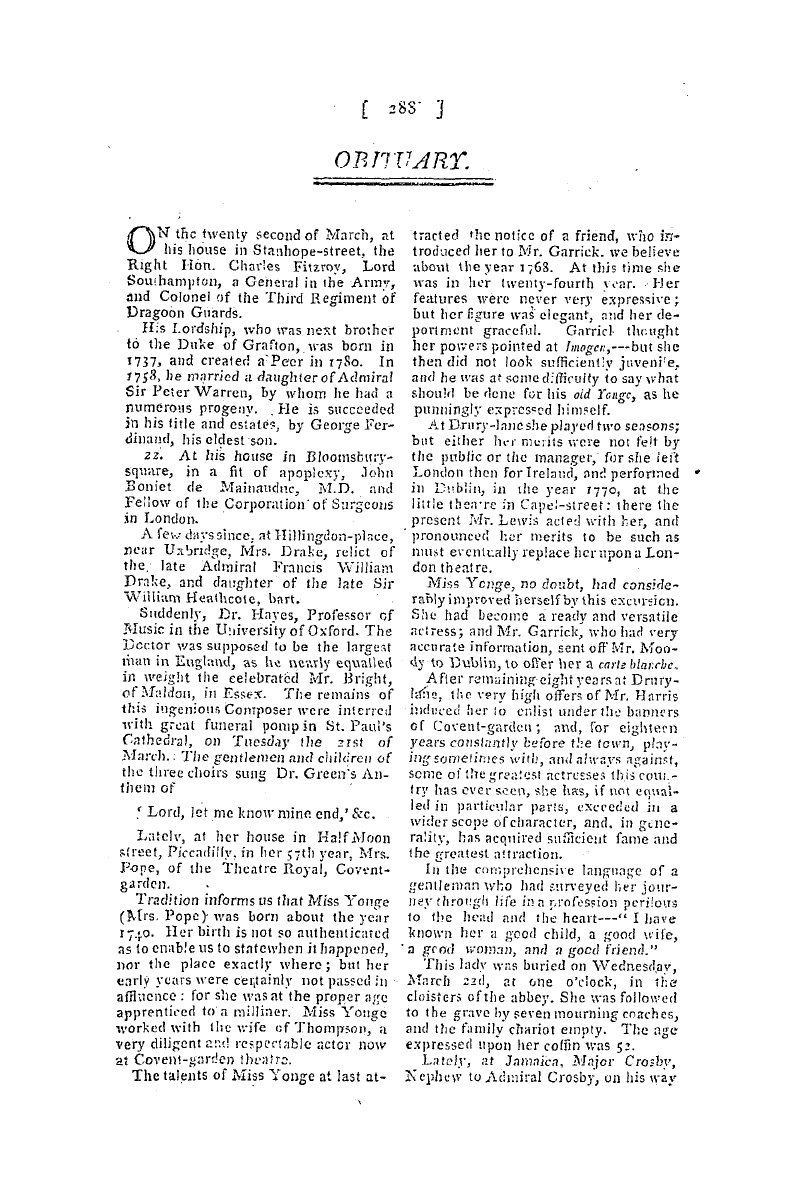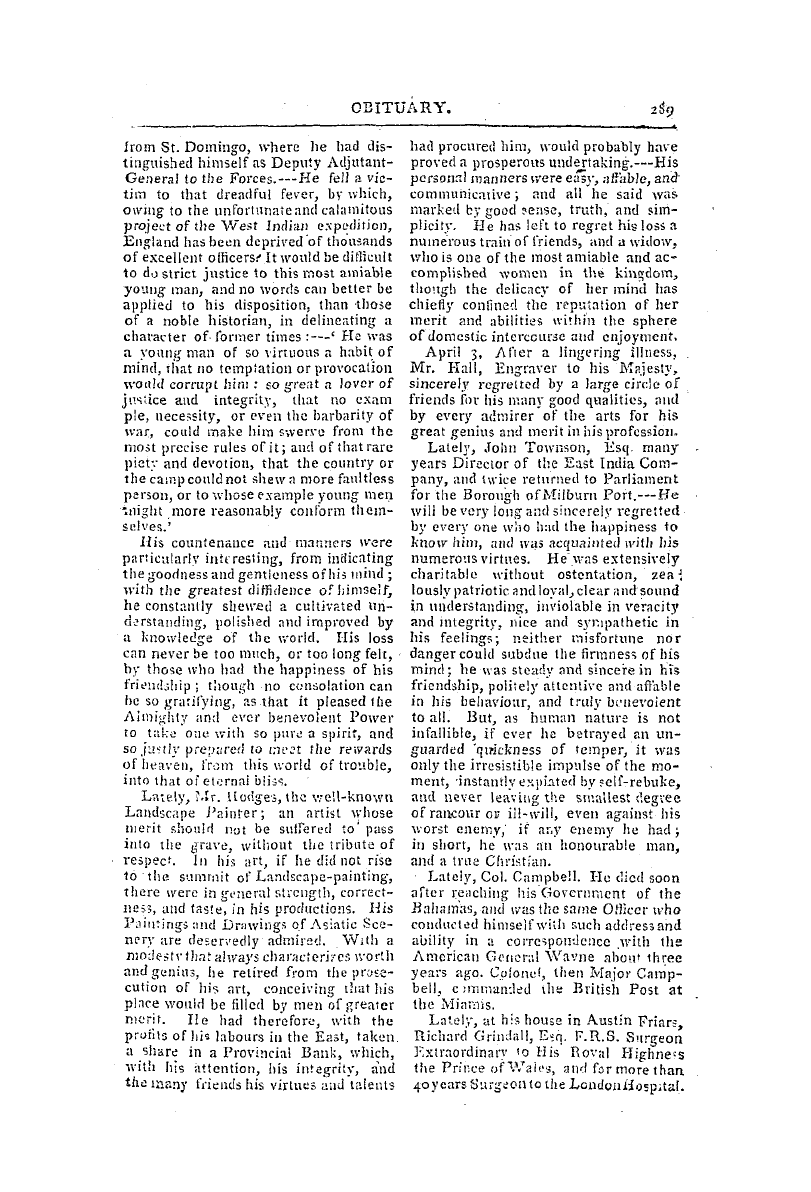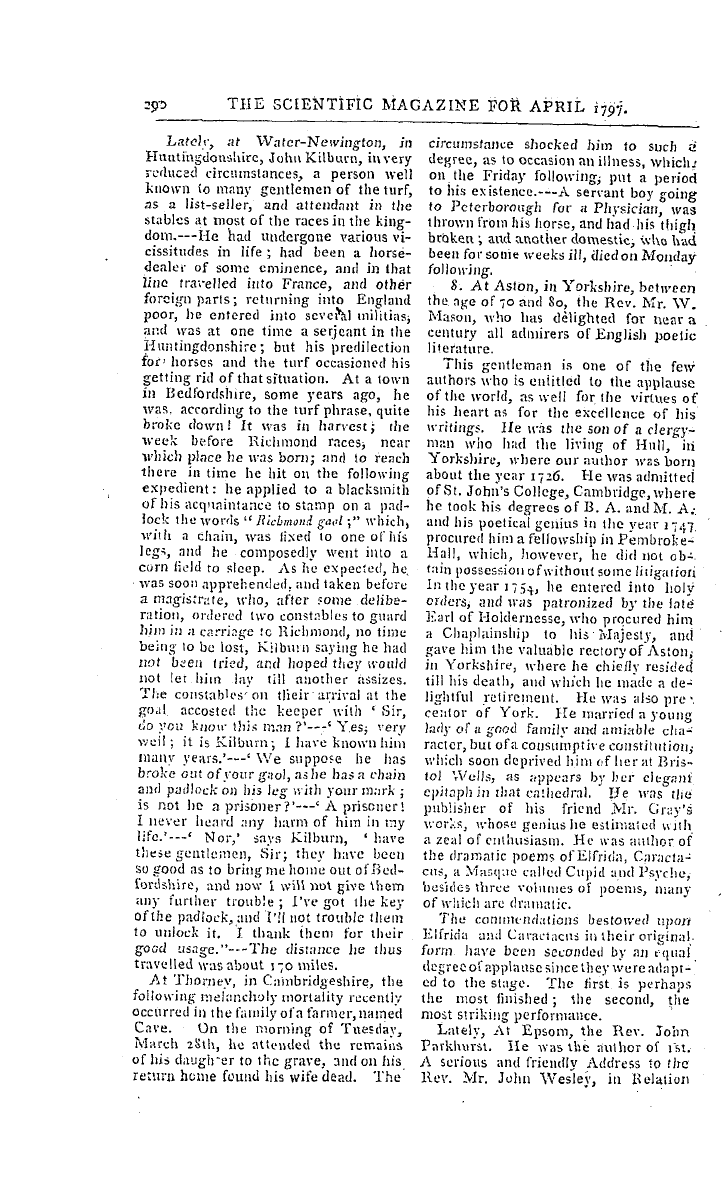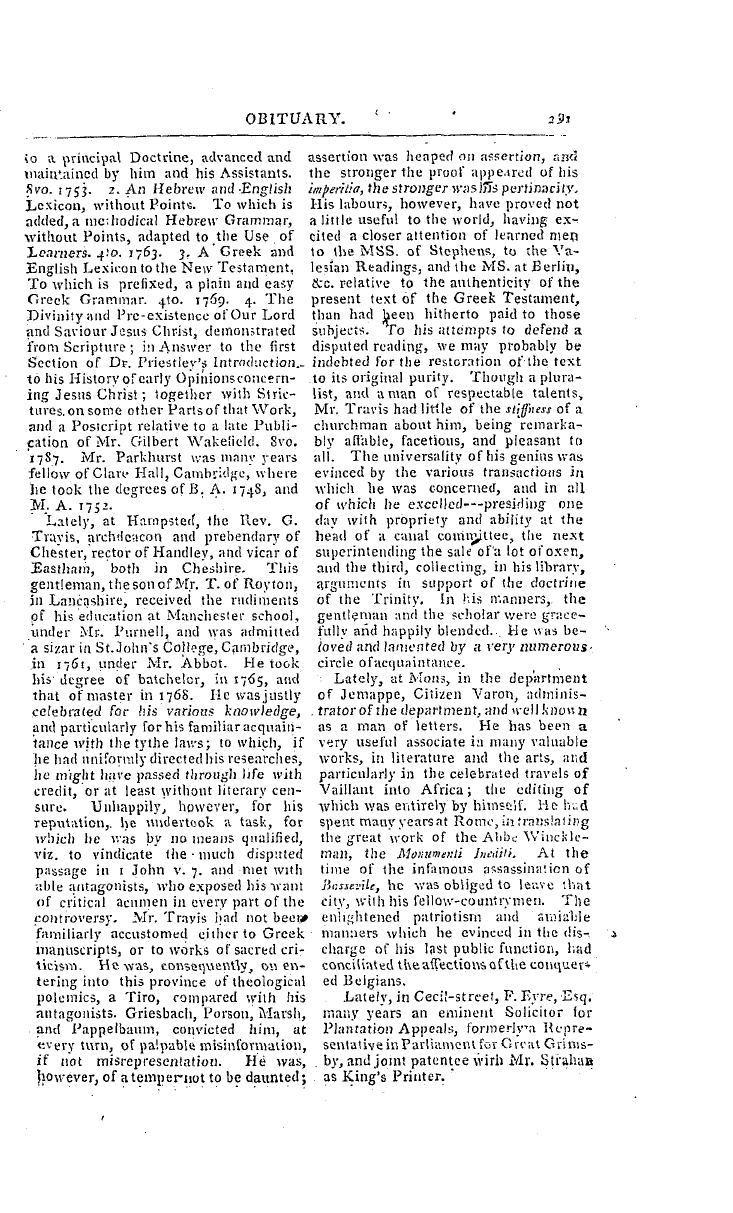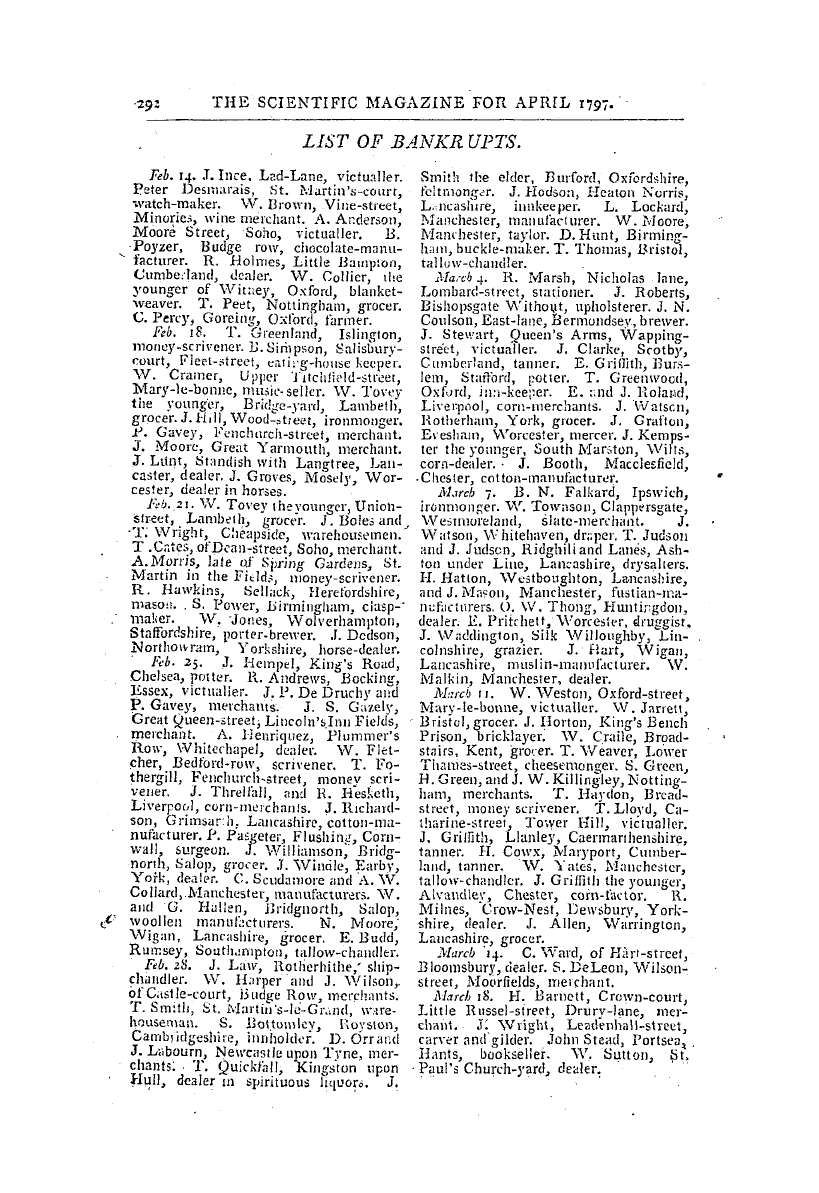-
Articles/Ads
Article REVIEW OF NEW PUBLICATIONS. ← Page 7 of 11 →
Note: This text has been automatically extracted via Optical Character Recognition (OCR) software.
Review Of New Publications.
dissection , eleven pretty large lizards ; three serpents as long as my arm ; eleven small tortoises , very entire , several of which were about two inches iii diameter ; and a number of locusts and other insects , most of which were sufficiently whole to be worth preserving and adding to my collection . The lizards , serpents , and tortoises , had all received the blow on the head from the beak . ' I observed too , that , beside this mass of food , the craw contained a sort
of ball , as large as the egg of a goose , formed of the verrebia : of serpents and lizards devoured before , shells of little tortoises , and wings , claws , and shields of different kinds of beetles . When this indigestible mass becomes too large , the secretary , no doubt , like other birds of prey , vomits and brings it up . However , from the superabundant quantity of aliment contained in the craw of the one I killed , it certainly was pot hunger that excited it to attack the serpent in the slough , but its natural hatred and
antipath y for reptiles . ' This antipathy is an inestimable advantage , in a climate which astonishingl y favours the multiplication of an infinite number of nq . xious and venomous animals . Under this point of view the secretary is reall y a benefit fi-ojn tbe hand of nature : and indeed its utility , and the services it perforins , are so well known at the Cape and its environs , that the Hottentots and planters never kill it , btit respect its life , as the Dutch do that of the stork , and tlijp
Egyptians that of thc ibis . ' We shall conclude our account of these elegantly written and instructive volumes with M . Le Vaillant ' s description of the GIRAFFE , a quadruped which has long been the admiration of every lover of natural history . ' I have already given some account of the manners and instinct of the giraffe , and I shall say something more . I have brought a skin into Euiope ; and if the apartments occupied by an individual were' not too low far
the Height of such an animal , I would have stuffed this skin , so as to exhibit . to the curious a faithful representation of it in its natural state . ' Its head is unquestionably tlie most beautiful part of its body . Itsmoutb is small : its eyes large and animated . Between tbe eyes , and above the nose , it has a very distinct and prominent tubercle . This ' is not a fleshy excrescence , but an enlargement of the bony part , the same as the two little bosses or protuberances , with which its occiput is armed , and which rise as large
as a hen ' s egg , one on each side" of tbe mane at its commencement . Its tongue is rough , and terminates in a point . Each jaw has six grinders on each side ; but the lower jaw only has eig ht cutting teeth in front , while tlie upper jaw has no > ie . ' , The hoof is cloven , has no heel , and much resembles that of the ox . It may be observed , however , at the first sigbt , that the hoof of the forefoot is larger than that of the hind foot . The leg is very slender : but the .
knee is swelled like that of a stumbling horse [ couroune ] , because that animal kneels down to sleep . It has also a large callosity in the middle of the sternum , owing to its usually reposing on it . ' If I had never killed a g iraffe , I should have thought , with many other naturalists , that its hind legs were much shorter than the fore ones . This is a mistake ; they bear the same proportion to each other as is usual in quadrupeds . I say the same proportion as is usual , because in this respect there
are variations , even jn animals of the same species . Every one knows , for jnstance , _ that mares are lower before than stallions . What deceives us in the giraffe , ancl occasions this apparent difference between the legs , is the height of the withers , which may exceed that of the crupper from sixteen to twenty inches , according to the age of the animal ; and which , when it is seen at a distance in motion , gives the appeal ance of much greater length tg > the fore-legs . ' ' " ' -
Note: This text has been automatically extracted via Optical Character Recognition (OCR) software.
Review Of New Publications.
dissection , eleven pretty large lizards ; three serpents as long as my arm ; eleven small tortoises , very entire , several of which were about two inches iii diameter ; and a number of locusts and other insects , most of which were sufficiently whole to be worth preserving and adding to my collection . The lizards , serpents , and tortoises , had all received the blow on the head from the beak . ' I observed too , that , beside this mass of food , the craw contained a sort
of ball , as large as the egg of a goose , formed of the verrebia : of serpents and lizards devoured before , shells of little tortoises , and wings , claws , and shields of different kinds of beetles . When this indigestible mass becomes too large , the secretary , no doubt , like other birds of prey , vomits and brings it up . However , from the superabundant quantity of aliment contained in the craw of the one I killed , it certainly was pot hunger that excited it to attack the serpent in the slough , but its natural hatred and
antipath y for reptiles . ' This antipathy is an inestimable advantage , in a climate which astonishingl y favours the multiplication of an infinite number of nq . xious and venomous animals . Under this point of view the secretary is reall y a benefit fi-ojn tbe hand of nature : and indeed its utility , and the services it perforins , are so well known at the Cape and its environs , that the Hottentots and planters never kill it , btit respect its life , as the Dutch do that of the stork , and tlijp
Egyptians that of thc ibis . ' We shall conclude our account of these elegantly written and instructive volumes with M . Le Vaillant ' s description of the GIRAFFE , a quadruped which has long been the admiration of every lover of natural history . ' I have already given some account of the manners and instinct of the giraffe , and I shall say something more . I have brought a skin into Euiope ; and if the apartments occupied by an individual were' not too low far
the Height of such an animal , I would have stuffed this skin , so as to exhibit . to the curious a faithful representation of it in its natural state . ' Its head is unquestionably tlie most beautiful part of its body . Itsmoutb is small : its eyes large and animated . Between tbe eyes , and above the nose , it has a very distinct and prominent tubercle . This ' is not a fleshy excrescence , but an enlargement of the bony part , the same as the two little bosses or protuberances , with which its occiput is armed , and which rise as large
as a hen ' s egg , one on each side" of tbe mane at its commencement . Its tongue is rough , and terminates in a point . Each jaw has six grinders on each side ; but the lower jaw only has eig ht cutting teeth in front , while tlie upper jaw has no > ie . ' , The hoof is cloven , has no heel , and much resembles that of the ox . It may be observed , however , at the first sigbt , that the hoof of the forefoot is larger than that of the hind foot . The leg is very slender : but the .
knee is swelled like that of a stumbling horse [ couroune ] , because that animal kneels down to sleep . It has also a large callosity in the middle of the sternum , owing to its usually reposing on it . ' If I had never killed a g iraffe , I should have thought , with many other naturalists , that its hind legs were much shorter than the fore ones . This is a mistake ; they bear the same proportion to each other as is usual in quadrupeds . I say the same proportion as is usual , because in this respect there
are variations , even jn animals of the same species . Every one knows , for jnstance , _ that mares are lower before than stallions . What deceives us in the giraffe , ancl occasions this apparent difference between the legs , is the height of the withers , which may exceed that of the crupper from sixteen to twenty inches , according to the age of the animal ; and which , when it is seen at a distance in motion , gives the appeal ance of much greater length tg > the fore-legs . ' ' " ' -




























































